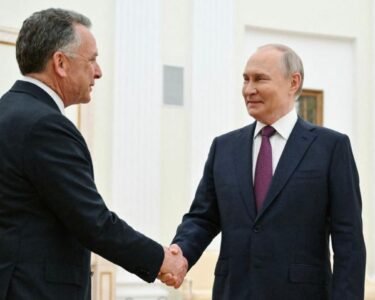In a rare geological event, Russia’s Krasheninnikov volcano has erupted for the first time in centuries, with experts suggesting it may have been triggered by a powerful earthquake that recently shook the Far East region. The eruption was confirmed by the Kamchatka Volcanic Eruption Response Team, marking the first historically verified activity from the volcano in approximately 600 years.
A Long-Dormant Giant Awakens
Located in the remote Kamchatka Peninsula, Krasheninnikov stands at 1,856 meters and had been classified as dormant for centuries. According to volcanologists, the last known eruption occurred around the year 1463, give or take four decades. Since then, the volcano had remained quiet, showing no signs of activity—until now.
The recent eruption follows closely on the heels of a magnitude-7.9 earthquake that struck the region just days earlier. That quake was so strong it triggered tsunami alerts across the Pacific Ocean, reaching as far as French Polynesia and Chile. Experts now believe that seismic stress caused by the quake may have destabilized the magma chamber beneath the volcano, leading to the sudden eruption.
Volcanic Ash Poses Risk to Aviation
The Russian Ministry for Emergency Situations reported that a towering ash plume, reaching up to 6,000 meters (around 3.7 miles), has been observed. The ash cloud is drifting eastward toward the Pacific Ocean. So far, there are no inhabited areas in the plume’s projected path, but authorities have issued an orange-level aviation alert—the second-highest warning tier—indicating a significant risk to air traffic.
Ash clouds can severely damage aircraft engines and reduce visibility, which is why aviation authorities and airlines closely monitor volcanic activity in the region.
A Region Known for Volcanic Activity
Kamchatka is part of the Pacific Ring of Fire, a zone known for frequent earthquakes and volcanic eruptions. The peninsula alone hosts over 160 volcanoes, with about 29 considered active. Just last week, Klyuchevskoy—the tallest active volcano in Eurasia—also erupted following the same earthquake. Scientists say the dual activity could point to a broader geophysical chain reaction.
“This series of eruptions may indicate that tectonic movement in the region has reached a critical point,” said Olga Girina, the lead volcanologist monitoring the situation.
No Immediate Threat to Residents
Authorities have confirmed that no evacuations are currently planned, and no injuries or damages to infrastructure have been reported. The eruption remains localized and is being continuously monitored by satellite and on-the-ground stations.
What Happens Next?
Scientists will be closely observing seismic data to understand whether Krasheninnikov’s eruption was a one-time event or the beginning of a new phase of volcanic activity. Volcanic eruptions that follow long periods of dormancy are difficult to predict, as magma pathways and gas pressures have often changed over centuries.
Image Source: Google
Image Credit: Respective Owner




